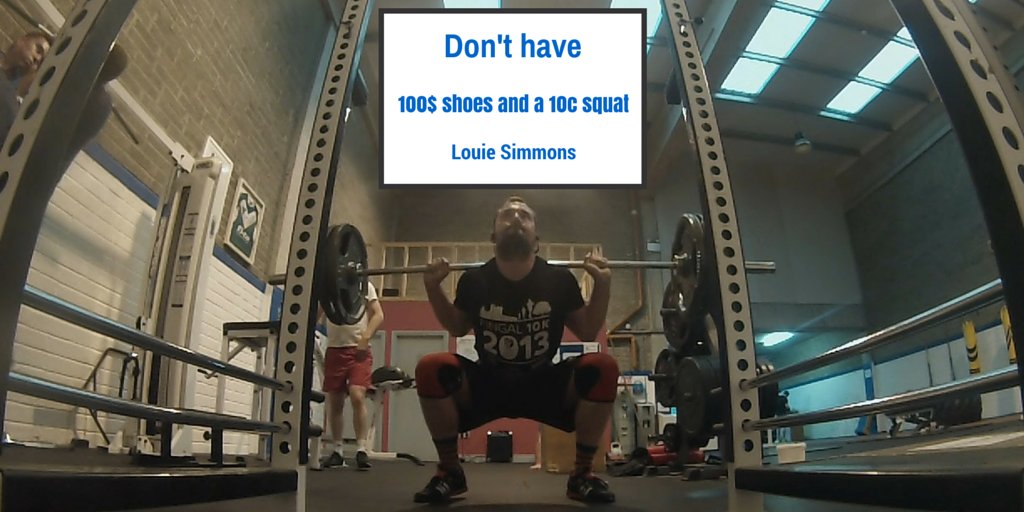Powerlifting vs weightlifting squat
The powerlifting squat mainly goes low bar and a little slower whereas the weightlifting squat is a high bar and faster. For stronger legs and speed go for weightlifting style. For a stronger lower back and maximum power go for the powerlifting squat.
What is your why
Before we go into the details of the differences between the powerlifting and weightlifting squat, let me ask you a couple of questions:
-
Why do you want to squat?
-
Why do you want to change your body?
-
What happens when you do?
-
What happens if you don’t?
These questions matter and will make a difference in your success and failure. Research shows that people who write down their goals and reflect on them are more likely to achieve them. When was the last time you did this? Can you even remember? If not, it is time to get out a pen and paper to get started. Many people go about their lives like this:
-
What do I want
-
How do I get it
-
Why do I want it
This will be a living nightmare. Putting what you want at the center of attention will make you miserable in the long run. Why? What we want changes hundreds of times a day based on who we are with, what we do and where we are. Chasing what you want is like trying to catch all rabbits at once. This way you will get none. Your resources will be spread thin and your time will be scattered between too many activities. Something interesting happens when you flip the running order of these questions on their head:
-
Why do you want something
-
How do you get it
-
What needs to be done
This way your long term goals gain in importance. Your thoughts and actions will become more connected and success will follow. If you want to know how this works on a psychological basis read Daniel Kahneman's thinking fast and slow. Simon Sinek's TED talk on the golden circle will change your life.
It all starts with new rituals, habits, and standards. Since I keep a self journal my marriage and salary have increased significantly. You can check it out via this link.
The squat
The squat is the most central barbell movement you can do. It is often the first exercise to be taught to Olympic weightlifters even though the bench press is more popular when the training is unguided.
When we refer to the squat we usually think of a barbell back squat. However, there are more variations of the squat than you might think:
-
High bar squat
-
Low bar squat
-
Front squat
-
Paused squat
-
Pin squat
-
Safety bar squat
-
Box squat
And many more, but let’s stick to these ones.
The high bar squat is the variation that most people are familiar with. You can also call it the weightlifting squat. In this variation, the bar rests higher on your back and you grip the barbell as narrow as possible before you get under the bar. The good thing of the high bar squat is that it can be performed quite speedy compared to other squats. The bad news about the higher bar squat is that you have minimal activation of the lower back involved.
The low bar squat is a variation where the bar rests lower in your back compared to the high bar squat. You will also grip the bar wider to allow the bar to place lower on your back. This squat is also commonly referred to as a powerlifting squat. The advantage of this setup is that you create a bigger shelf for the barbell and activate your lower back muscles more. The disadvantage is that it is usually harder to drop quickly under the bar based on the changes leverages.
The front squat is the variation of the squat where you have the barbell in the front rack position rather than on your back. This movement is highly relevant and transferable to the sport of weightlifting. Powerlifters may also utilize the front squat to improve their posture for the back squat. The big advantage of the front squat is that it trains to be upright during the squat and hammers the quads and glutes. The disadvantage is that the setup can be very uncomfortable for your arms and hands.
The paused squat is a back squat in which you deliberately pause the movement in some section of the squat. This is usually done in the hole for a two-second count. This exercise is helpful when you have trouble to complete maximum attempts due to sticking points. Pause the lift shortly before you fail in training to bulky extra strength in your weakest position.
The pin squat is a variation of the paused squat on which you let the barbell rest on the safety pins before squatting up again. This is beneficial to become more explosive for the squat as you are moving a dead weight up which has lost all momentum.
Safety bar squats are very popular for strongman athletes and seasoned powerlifters. The safety bar puts less stress on your discs than the straight barbell and helps to train your posterior chain even harder. The downside is that the setup is very cumbersome and not every gym has a safety bar available.
Box squats take the idea of paused squats and pin squats but let you sit down on a box instead. You choose the height according to your weakest part of the range of motion and get going.
Powerlifting squat
The powerlifting squat is usually a low bar squat with a wider stance. This brings a bigger shelf to the bar and more stability through the wider stance. Your lower back will have a bigger role to play than with the weightlifting squat.
The advantages of this are that you will be able to move more weight more securely. The disadvantage is that this usually happens slower than with a high bar squat. You will sacrifice speed for stability and control. This is great for powerlifting as you are done when you are back up. For the snatch and clean and jerk, this is suboptimal. You want to minimize the time under tension in this scenario.
Weightlifting squat
The weightlifting squat is usually a high bar squat. Weightlifters are more concerned about how quickly they can move under the bar and bring it up to the front rack position or into the position for the overhead squat. As you usually can press a lot less weight overhead than you can squat, it is not really important to maximize the weight you can squat but the speed at which you can move a slightly sub-maximum weight.
The weightlifting squat is set up to get you under the bar and into the hole as quick as possible. For this, you grip narrow and descend fast. Ideally, you even make the barbell pop a little at the top of the movement.


